Shifting Geologies (2020-ongoing)
Shifting Geologies, 2020-ongoing, Installation view (detail), Mixed media after simulation of the rock formation process, phosphorescent acrylic tubes on bricks, magnifying glass, illustrations on acetate sheet,40m2, What the eyes cannot see, the heart cannot feel, Kunsthaus Dresden - Municipal gallery for contemporary art, DE, 2021
With Shifting Geologies, an ongoing and constantly expanding artistic research that began in 2020 and has been in constant motion ever since, the artist Silvia Noronha directs her gaze into a possible future. In her installation, she refers to what archaeological artefacts might look like in a distant time, and at the same time she addresses what they will reveal about the way we treat our environments today. In a process of exposing materials to extreme heat, the artist imitates a process that is part of geological developments - for example, the formation of metamorphic rock, which is created by increasing temperatures or pressure deep in the earth's crust, but which retains its solid state during mineralogical trans-formation. Man-made materials such as electronics or plastics, residues and remnants of civilizations combine with natural materials in Silvia Noronha's objects, allowing us to draw conclusions about human activity in the environment. Fused together and pressed into one another, the objects, presented like excavation pieces, reveal something about what human civilization leaves behind and what a geology might look like after man-made and natural materials have merged over time.
In doing so, however, Shifting Geologies does not paint a dystopian picture of a supposed future, but rather asks what it might look like.
curated by Christiane Mennicke-Schwarz & Vincent Schier
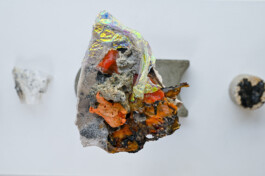


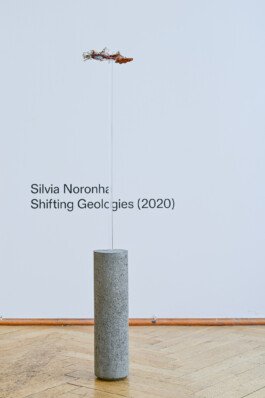
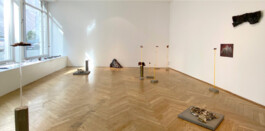
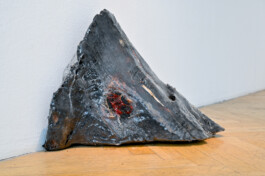
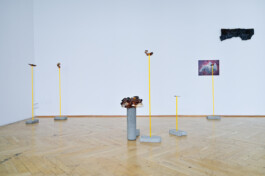
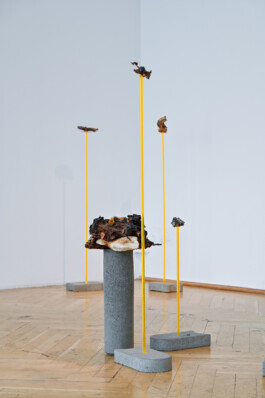
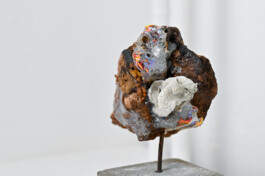
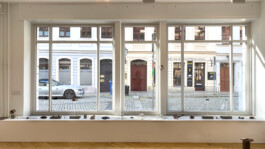
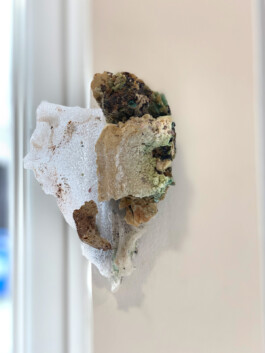
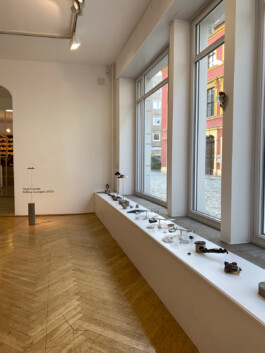
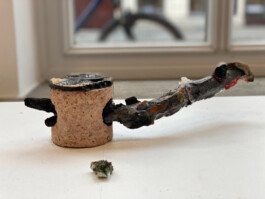

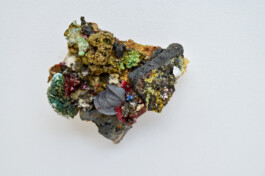
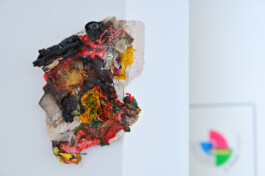
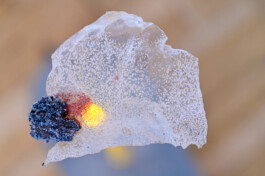
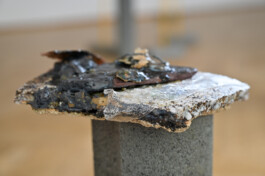
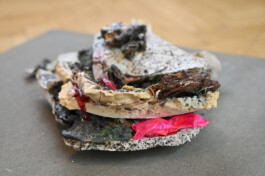
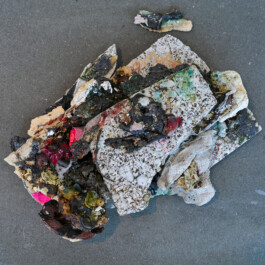
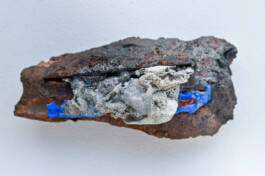
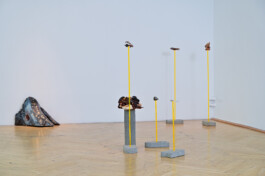
About the exhibition: What the eyes cannot see, the heart cannot feel
The exhibition What the eyes cannot see, the heart cannot feel is dedicated to the coexistence of humans with their natural environment. Around the world, landscapes and ecosystems have been and are still being changed by human interventions, while languages and cultural techniques have evolved in direct response to landscapes, plants and soils.
Recognizing the necessities of living in coexistence will decide whether survival on our planet will succeed. What the eyes cannot see, the heart cannot feel features contemporary artworks that evoke a variety of narratives on coexistence and global knowledge.
With cautious, archaeological, partially research-oriented and partially experimental approaches and near-natural setups, and based on anecdotes, conversations and archive material, the artworks exemplarily address entangled stories at various locations across the globe.
Modern forestry and historical knowledge of the bark beetle come into view, as does the story of a huge cactus from northern Mexico that was transplanted to Seville in 1992. As silent witnesses, trees tell the history of apartheid in South Africa, and film footage from the history of the environmental movement hint at the magnitude of the task that still awaits us, namely, to (re)learn languages and forms of knowledge that have fallen into oblivion or been systematically marginalized.
Based on a speculative view from the future to the times we are living in today, the issue is also if and how humans can succeed in becoming part of a circulatory system again—or what archaeology will find when its searches for traces of our lives?
Curated by: Christiane Mennicke-Schwarz, Vincent Schier
more: art-in , dca , kunsthausdresden
Shifting Geologies (2020-ongoing)
Shifting Geologies, 2020-ongoing, Installation view (detail), Mixed media after simulation of the rock formation process, phosphorescent acrylic tubes on bricks, magnifying glass, illustrations on acetate sheet,40m2, What the eyes cannot see, the heart cannot feel, Kunsthaus Dresden - Municipal gallery for contemporary art, DE, 2021
With Shifting Geologies, an ongoing and constantly expanding artistic research that began in 2020 and has been in constant motion ever since, the artist Silvia Noronha directs her gaze into a possible future. In her installation, she refers to what archaeological artefacts might look like in a distant time, and at the same time she addresses what they will reveal about the way we treat our environments today. In a process of exposing materials to extreme heat, the artist imitates a process that is part of geological developments - for example, the formation of metamorphic rock, which is created by increasing temperatures or pressure deep in the earth's crust, but which retains its solid state during mineralogical trans-formation. Man-made materials such as electronics or plastics, residues and remnants of civilizations combine with natural materials in Silvia Noronha's objects, allowing us to draw conclusions about human activity in the environment. Fused together and pressed into one another, the objects, presented like excavation pieces, reveal something about what human civilization leaves behind and what a geology might look like after man-made and natural materials have merged over time.
In doing so, however, Shifting Geologies does not paint a dystopian picture of a supposed future, but rather asks what it might look like.
curated by Christiane Mennicke-Schwarz & Vincent Schier






















About the exhibition: What the eyes cannot see, the heart cannot feel
The exhibition What the eyes cannot see, the heart cannot feel is dedicated to the coexistence of humans with their natural environment. Around the world, landscapes and ecosystems have been and are still being changed by human interventions, while languages and cultural techniques have evolved in direct response to landscapes, plants and soils.
Recognizing the necessities of living in coexistence will decide whether survival on our planet will succeed. What the eyes cannot see, the heart cannot feel features contemporary artworks that evoke a variety of narratives on coexistence and global knowledge.
With cautious, archaeological, partially research-oriented and partially experimental approaches and near-natural setups, and based on anecdotes, conversations and archive material, the artworks exemplarily address entangled stories at various locations across the globe.
Modern forestry and historical knowledge of the bark beetle come into view, as does the story of a huge cactus from northern Mexico that was transplanted to Seville in 1992. As silent witnesses, trees tell the history of apartheid in South Africa, and film footage from the history of the environmental movement hint at the magnitude of the task that still awaits us, namely, to (re)learn languages and forms of knowledge that have fallen into oblivion or been systematically marginalized.
Based on a speculative view from the future to the times we are living in today, the issue is also if and how humans can succeed in becoming part of a circulatory system again—or what archaeology will find when its searches for traces of our lives?
Curated by: Christiane Mennicke-Schwarz, Vincent Schier
more: art-in , dca , kunsthausdresden